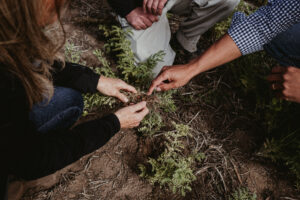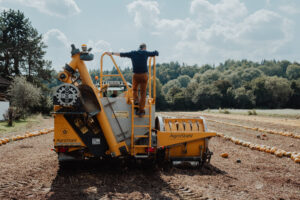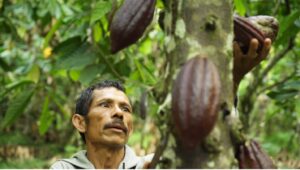
As multinational meals manufacturers promise to be extra sustainable with element sourcing, the thrill about regenerative agriculture is rising. However what does regenerative agriculture imply? And the way does regenerative agriculture evaluate to qualified biological agriculture—or to plant-based biological farming? Stay studying to determine:
Regenerative Agriculture in Context:
Sustainable Answers for a Damaged Meals Gadget
The issues of contemporary business agriculture had been known for over 100 years. However with rising consciousness of weather trade—and the numerous environmental affect of standard farming—the cry for extra sustainable agriculture is louder than ever.
Along the established biological agriculture motion, scientists, farmers, and coverage makers have explored a number of sustainable farming approaches as doable answers to our damaged world meals gadget.
And from a box that comes with agroecology concepts starting from climate-smart agriculture to round agriculture, conservation agriculture to low-input farming, regenerative agriculture has emerged as the most up to date contender.

What’s Regenerative Agriculture?
Even though proponents and practitioners of regenerative agriculture agree on a selection of core issues, targets, and practices, there’s no criminal or regulatory definition of regenerative agriculture1,2.
Neither is there but a unifying group that represents a good portion of the worldwide regenerative agriculture group with the voice or momentum to suggest for one. (Even though the global motion to modify that via regional alliances is rising)3.
And the loss of a transparent definition of what regenerative agriculture manner is the supply of greenwashing complaint4. As one of the most global’s greatest meals firms hop at the regenerative agriculture bandwagon, obscure targets and fuzzy objectives be offering responsibility loopholes for sustainability guarantees made in that absence.
With out a common definition at an trade, instructional, regulatory, or criminal degree, regenerative agriculture additionally has no common method.
Thus, regenerative agriculture isn’t a prescriptive agricultural manner5 with laws for what will have to (or will have to no longer be) achieved.
As an alternative, regenerative agriculture farmers pick out and make a choice from a selection of strategies, concepts, and practices as they see have compatibility in keeping with their weather, soil kind, and the combo of plants they farm—and their person manner, personal tastes, and targets.
In spite of this, each and every try to outline regenerative agriculture concurs:
Restoring / bettering soil well being and reversing biodiversity loss are the important thing drivers of each and every interpretation of this rising strategy to extra sustainable farming1,2.
And for many, useful resource control, water retention, resilience to weather trade—and the usage of soil carbon sequestration to assist struggle it—also are core issues.

Regenerative Agriculture Rules and Practices
Grounded in sustainability and rooted in soil well being, regenerative agriculture goals to revive, strengthen, and preserve soil via herbal processes inside of a farming gadget.
Even though each and every farmer is loose to interpret and practice regenerative agriculture concepts to their distinctive wishes, maximum draw from the next set of not unusual rules and practices in how they set up soil well being and fortify biodiversity5,6:
Commonplace Regenerative Agriculture Practices:
Set up Soil Well being
- Depart soil undisturbed with zero-till / minimal-tillage practices
- Stay residing roots in soil all 12 months with quilt plants
- Retain stubble and different mulch and inexperienced manure
- Building up biological topic and carbon in soil with compost, inexperienced and animal manures, biochar, and compost teas
Give a boost to Biodiversity
- Foster plant variety via:
-
-
- Numerous crop rotations
- Multi-species quilt plants
- Intercropping or significant other planting
-
- Combine tree plants (might come with wooded area pasture or different agroforestry approaches)
- Use rotational grazing and/or holistic grazing with small quantity farm animals
- Cut back, restrict, or steer clear of insecticides and/or different artificial inputs
Is Regenerative Agriculture Natural?
Regenerative agriculture isn’t biological farming. Not like qualified biological farming, there aren’t any regulatory necessities or prohibitions for the way regenerative agriculture is finished. So, a farmer working towards regenerative agriculture might—or would possibly not—use biological strategies at their discretion.
So, it’s imaginable to apply regenerative agriculture and nonetheless use GMOs, artificial insecticides and fertilizers, and different strategies not unusual in standard farming however forbidden via biological requirements.
What’s Qualified Natural Agriculture?
Whilst it’s imaginable to apply regenerative agriculture alongside a wide spectrum, qualified biological agriculture is obviously outlined and follows a strict criminal and regulatory framework in maximum nations of the sector.
Natural requirements restrict using artificial insecticides and herbicides, artificial nitrogen, potassium, and phosphorous fertilizers, and GMOs. Why? To steer clear of hurt to soil, plant, animal, environmental, and human well being1.
Whilst you acquire qualified biological meals, a licensed biological seal from an across the world known frame guarantees it was once produced with out artificial chemical substances or GMOs—whether or not it bears the USDA Natural, Canada Natural, High quality Assurance Global, Ecocert, or some other across the world known brand.
Is Qualified Natural Agriculture Regenerative?
Even though the foundations of biological agriculture attach the ideas of well being, ecology, equity, and care to the apply7, biological certification requirements center of attention on inputs. Particularly, what’s and isn’t allowed.
Relying at the crop, a licensed biological farmer can agree to all rules—the usage of no artificial fertilizers, insecticides, herbicides, or GMOs—with out making regenerative farming’s dedication to soil well being.
What’s Plant-based Natural (Veganic) Farming?
At One Stage Organics, we transcend qualified biological with our components. Our farmer companions aren’t simply qualified biological—in addition they use plant-based biological farming strategies.
Veganic (vegan biological) farming manner no animal by-products—like manure, bone-, blood-, fish-, or feather-meal—are used as fertilizer. As an alternative, plant-based biological farmers use different strategies to go back vitamins and upload biological topic to the soil.
And lots of the strategies and practices utilized in plant-based biological farming overlap with the ones utilized in regenerative agriculture.
What Do Plant-based Natural (Veganic) Farming and Regenerative Agriculture Have in Commonplace?
For each veganic farming and regenerative agriculture, sustainability is profoundly hooked up to soil well being.
Proponents of each imagine the sustainability issues created via standard agriculture and business monoculture farming can’t be solved via era—or the pondering in the back of it that has resulted in depleted soil and dependence on artificial fertilizers.
So, each approaches spend money on constructing soil well being with the conclusion that soil is an very important useful resource had to develop wholesome meals, and that restoring soil biodiversity improves sustainability in farming and for the surroundings. (See our Soil Well being Sidebar to be informed why)!
To that finish, plant-based biological and regenerative agriculture farmers use lots of the similar practices to construct wholesome soil naturally.

Commonplace strategies shared between plant-based biological farming and regenerative agriculture come with:
- Crop rotation
(rising nitrogen-fixing plants like clover, alfalfa, lentils, and legumes in rotation with different plants) - Intercropping and significant other planting
(rising two or extra mutually supportive plants in the similar box) - Duvet plants
(non-harvested plants planted to stay are living roots in soil and left so as to add biological topic (inexperienced manure) to nourish a wholesome soil microbiome) - No-till or reduced-till soil control
- Plant-based compost
Along with (and most probably on account of) those shared soil-building strategies, each plant-based biological farming and regenerative agriculture attraction to smaller-scale, impartial farmers.
Those strategies can require extra hands-on care and time. However they’re additionally cost-effective for circle of relatives farmers with smaller plots of land the place the economies of scale that justify making an investment in large-scale business farm apparatus can by no means be learned.
And they’re available even to smallholding farmers in creating nations who can not have the funds for the substitute fertilizers standard agriculture is determined by to farm depleted soil.
The farming strategies not unusual to veganic and regenerative agriculture empower farmers like Pak Fransiskus—who grows biological cacao for Tripper, our farm spouse in Bali, Indonesia—to repair wholesome soil, feed their households, and higher their lives and communities.

The Convergence of Qualified Natural and Regenerative Agriculture: Regenerative Natural Qualified and Natural 3.0
One Stage and our plant-based biological farmer companions don’t seem to be on my own in our trust that qualified biological requirements are a kick off point—no longer a vacation spot.
From the Rodale Institute to IFOAM – Organics Global, leaders within the biological motion who cleared the path for certification now suggest for biological farming to move past the fundamentals of sustainability.
Regenerative biological agriculture expands the scope of qualified biological with the conclusion this is now not sufficient to care for sources and do no hurt—we should repair soil well being to make sure the way forward for our planet8.
Obviously outlined via the brand new Regenerative Natural Qualified same old which makes use of USDA Natural certification because the baseline, regenerative biological agriculture provides the soil well being practices not unusual to regenerative agriculture and plant-based biological farming, and layers social equity practices into its scope.
And the place Natural 2.0 established world requirements and international call for for biological meals, Natural 3.0 concurs that it’s now not sufficient simply to turn out what we do no longer do (use synthetics and GMOs)9.
For biological agriculture to be really sustainable—and make a significant affect at the well being of the planet and the entire folks on it—we should do what we do with goal. Beginning with the soil, and for the good thing about all.

Why Everybody Will have to Care About Wholesome Soil
An very important and non-renewable herbal useful resource, wholesome soil is essential to ecosystems and human existence10. In step with the United International locations (FAO11 and UNDRR):
- Soil is not just basic for rising plants for meals, fiber, feed, and gasoline—additionally it is a clear out for blank water and a big carbon storehouse that is helping control carbon dioxide and greenhouse fuel emissions.
- Even though soil erosion and degradation occur naturally, human actions—together with extensive agriculture, deforestation, over-grazing, and unsustainable land use—have higher the erosion and degradation charge via as much as 1,000 occasions.
- 33% of the Earth’s soils are already degraded. Over 90% may well be degraded via 2050. And it might take as much as 1,000 years to supply 2 – 3 cm of topsoil.
- Soil erosion and degradation are a big risk to world meals safety and may end up in a 50% loss in crop yields.
To be transparent: At One Stage, our dedication to plant-based biological meals is steadfast. And we applaud any method that strikes clear of standard agriculture’s dependence on artificial fertilizers, herbicides, and insecticides, and actively works to revive soil well being the usage of regenerative strategies.
As a result of when the well being of the planet—and each and every individual on it—is determined by sustainable soil control, significant growth (no longer perfection) issues.
Learn this text to be informed extra about our Veganic Rules and why One Stage Organics merchandise are made with the most productive plant-based biological components on the earth.
Scroll down to enroll in our e-newsletter to fulfill our plant-based biological farmer companions and get wholesome biological recipes your circle of relatives will love.
And observe us on Instagram, Fb, and Pinterest for extra!
References:
[1] Rempelos, L., Kabourakis, E., Leifert, C. Cutting edge Natural and Regenerative Agricultural Manufacturing. Agronomy 2023, quantity 13, factor 1344. To be had from: https://doi.org/10.3390/agronomy13051344https://www.mdpi.com/2073-4395/13/5/1344, accessed December 18, 2023.
2 Schreefel, L, Schulte, R.P.O., de Boer, I.J.M., Pas Schrijver, A., van Zanten, H.H.E., Regenerative agriculture – the soil is the bottom. World Meals Safety, quantity 26 (2020), 100404, August 6, 2020. To be had from: https://www.sciencedirect.com/science/article/pii/S2211912420300584, accessed December 20, 2023.
3 Regeneration Global, Regeneration Alliances. 2019. To be had from: https://regenerationinternational.org/regeneration-alliances/, accessed January 11, 2023.
4 De Sousa, A. and Afanasieva, D. for Bloomberg Information, Giant Meals Runs Greenwash Possibility Over Regenerative Farming Push. BNN Bloomberg, Making an investment, September 20, 2023. To be had from: https://www.bnnbloomberg.ca/big-food-runs-greenwash-risks-over-regenerative-farming-push-1.1973912, accessed December 19, 2023.
5 Khangura, R., Ferris, D., Wagg, C., Bowyer, J. Regenerative Agriculture—A Literature Evaluation at the Practices and Mechanisms Used to Give a boost to Soil Well being. Sustainability 2023, 15, 2338. To be had from: https://www.mdpi.com/2071-1050/15/3/2338, accessed December 18, 2023.
6 Giller, Ok. E., Hijbeek, R., Andersson, J. A., & Sumberg, J., Regenerative Agriculture: An agronomic viewpoint. Outlook on Agriculture, quantity 50, factor 1, pages 13 – 25, 2021. To be had from: https://journals.sagepub.com/doi/complete/10.1177/0030727021998063#table1-0030727021998063, accessed December 18, 2023.
7 IFOAM Organics Global, The 4 Rules of Natural Agriculture: The Rules of Natural Agriculture are Well being, Ecology, Equity and Care. Global Federation of Natural Agriculture Actions (IFOAM – Organics Global), 2023. To be had from: https://www.ifoam.bio/why-organic/shaping-agriculture/four-principles-organic, accessed December 19, 2023.
8 Rodale Institute, Regenerative Natural Agriculture. To be had from: https://rodaleinstitute.org/why-organic/organic-basics/regenerative-organic-agriculture/, accessed December 18, 2023.
9 Arbenz, M., Gould, D., and Stopes, C. on behalf of IFOAM Organics Global and the Sustainable Natural Agriculture Motion Community (SOAAN), Natural 3.0 for really sustainable farming & intake, 2nd up to date version. 2016. To be had from: https://www.ifoam.bio/websites/default/recordsdata/2020-05/Organic3.0_v.2_web.pdf, accessed December 19, 2023.
[1]0 United International locations Place of work for Crisis Possibility Relief (UNDRR), Figuring out Crisis Possibility: Soil Erosion: Distinctive identifier / Notation EN0019. UNDRR, 2021. To be had from: http://www.undrr.org/fast/78513, accessed December 19, 2023.
[1]1 Meals and Agriculture Group of the United International locations (FAO), World Symposium on Soil Erosion: Key Messages.FAO, 2023. To be had from https://www.fao.org/about/conferences/soil-erosion-symposium/key-messages/en/, accessed December 19, 2023.

Leave a Reply